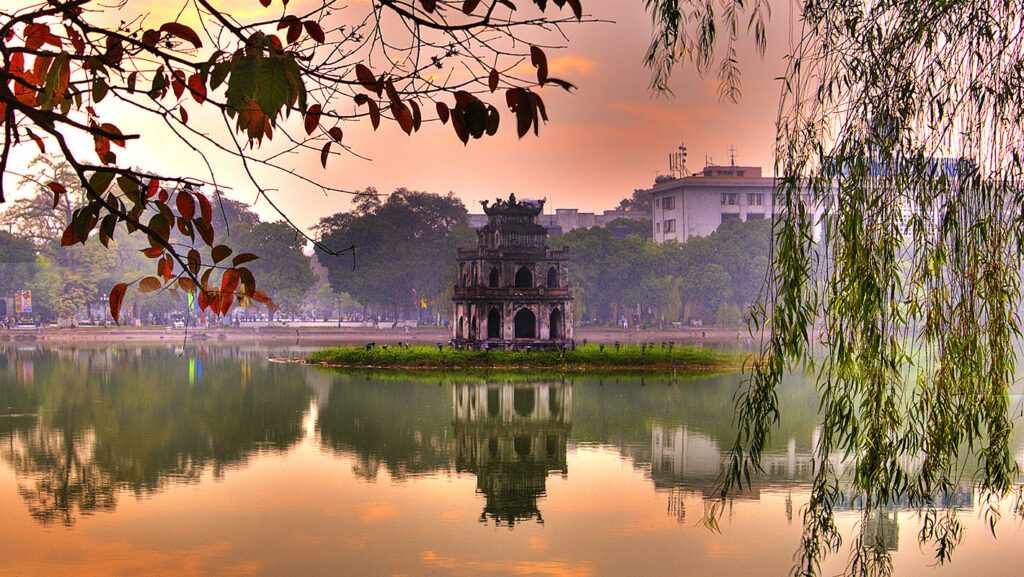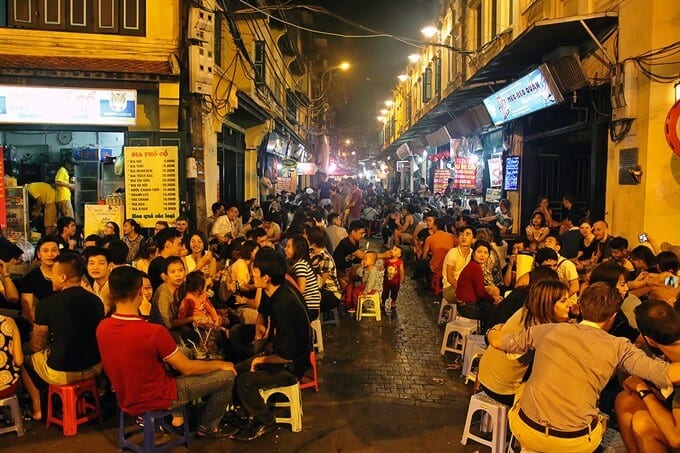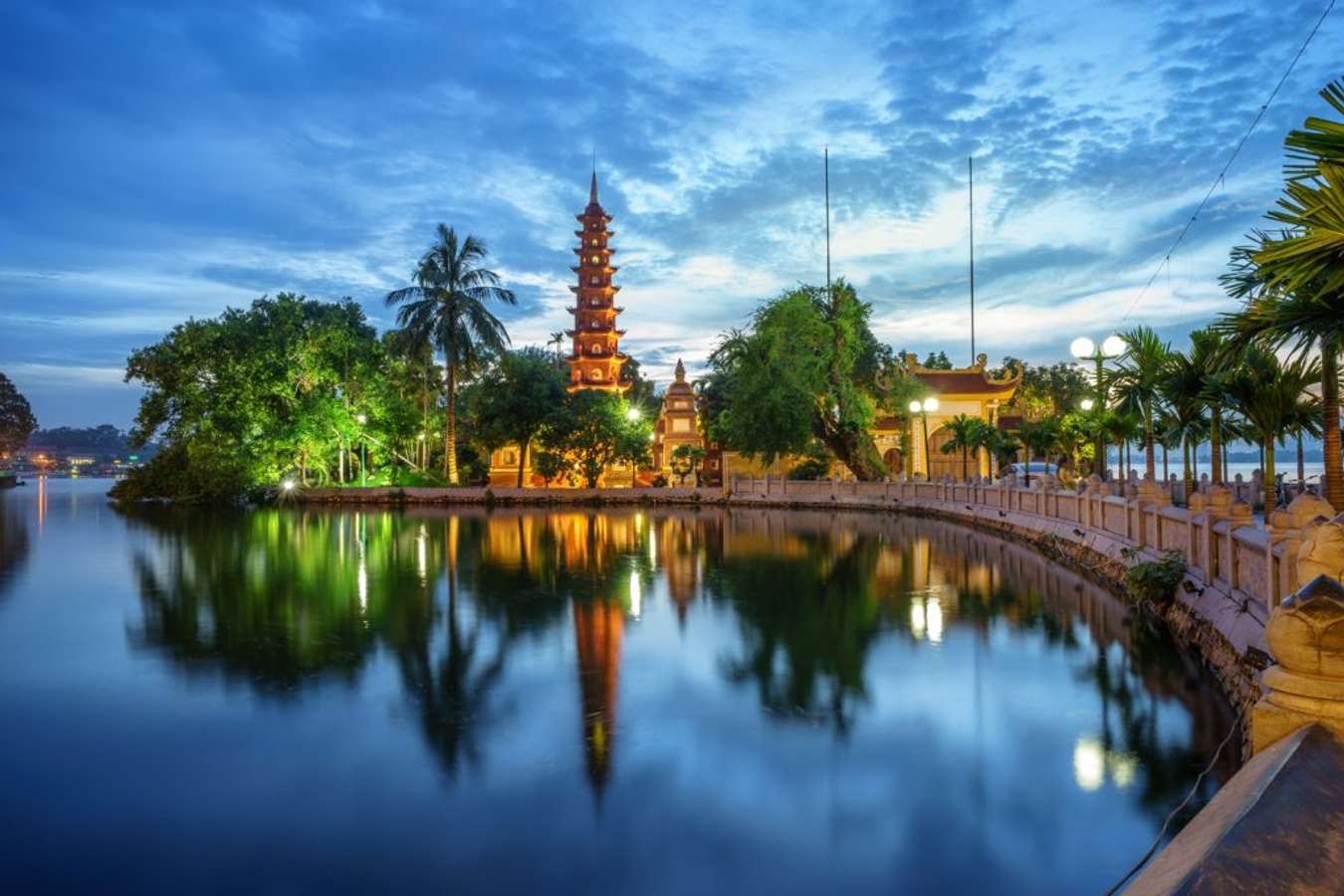The presentation
Hanoi is a city full of charm and history. The capital of Vietnam has a unique atmosphere, where the modern and the traditional mix. The small narrow streets of the old town district are a real labyrinth, where it is pleasant to get lost to discover small traditional shops, colorful temples or even colonial houses. The tea stalls set up on the sidewalks are also a real institution, where residents meet to chat and drink tea while watching the spectacle from the street.
But Hanoi is not limited only to its historic center. The city also has numerous museums, green parks and peaceful lakes, ideal for relaxation and contemplation. The Restored Sword Lake, for example, is a popular walking spot for locals and tourists, where you can admire the red bridge and the Ngoc Son temple.
In short, Hanoi is a city that leaves no one indifferent. Between its historical heritage, its renowned gastronomy and its unique atmosphere, it fully deserves to be discovered during a stay in Vietnam.

Visit the old quarters on foot
Discovering the old quarters of Hanoi is an exceptional experience for all visitors to this lively and colorful city. As you stroll through the narrow, winding streets, you can admire the old traditional houses that are the pride of the city. You can also enjoy local dishes on the sidewalk, in the many small restaurants and stalls that line the streets. The city's culinary specialties are numerous and varied, from rice noodles to baguettes to soups to meatballs. Finally, you can't miss Ta Hien Street, famous for its bars and restaurants where you can enjoy a cold beer and meet friendly and welcoming locals. Feel free to soak up the local culture and discover all that Hanoi has to offer.

Visit temples and pagodas, lakes in Hanoi
Ha Noi is a city rich in history and culture, and this is reflected in the many temples and pagodas that dot the city. Visiting these places of worship can provide a unique and enriching experience. Among the most popular places is Tran Quoc Pagoda, located on a small island in the middle of West Lake. This pagoda, more than a thousand years old, is considered one of the oldest and most beautiful in Vietnam.
Another interesting place to visit is the Restored Sword Lake, which takes its name from a legend that an emperor gave a magic sword to a dragon to help it fight invaders. The dragon then returned the sword to the emperor by dropping it into the lake. Today, the lake is a popular relaxation area for Hà Nội residents, who go there to jog, cycle or simply stroll.
Finally, West Lake is also a popular walking spot, especially at sunset when the city lights reflect on the water. It is surrounded by many temples and gardens, as well as restaurants and food stalls, making it a great place to relax and enjoy Hà Nội's nightlife.

Visit its colonial streets which were created at the time of French colonization
This other walk takes us to discover the old colonial district of Hanoi and its most emblematic buildings. From 1873, the French occupied the city which would become the capital of French Indochina from 1902 to 1953. Thus, from these 80 years of occupation, there still remain significant traces, particularly in the architecture of the old colonial district of the capital. The origin of this district is the concession obtained by the French on the right bank of the Red River, at the very beginning of their conquest. It was located approximately southeast of the current opera house. It is therefore from their concession that the French will extend their influence towards the citadel.
In their desire to get closer to their way of life in the mainland and to modernize Hanoi, the French settlers developed a certain number of infrastructures for entertainment, administration, education and religion. One of the greatest promoters of this transformation was Paul Doumer, governor general of Indochina from 1897 to 1902. Some of these infrastructures have disappeared, others have stood the test of time and today fulfill another function. It is possible to visit many of them and immerse yourself in this facet of Hanoi’s past.





